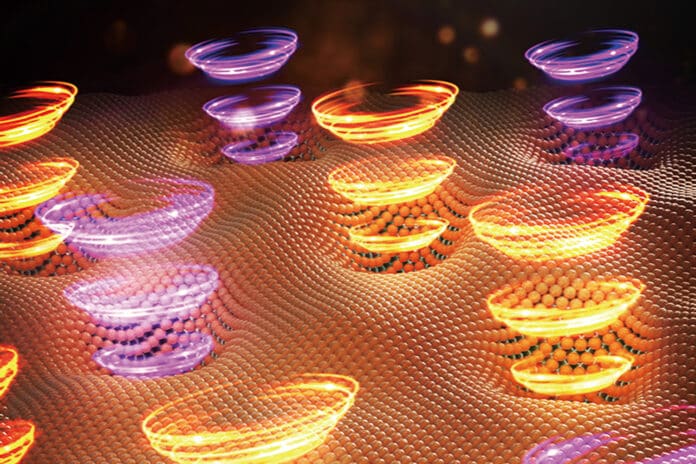Non-reciprocal single-photon devices and deterministic spin-photon interfaces for quantum networks may be made possible by quantum light emitters that can produce single photons with circular polarization and non-classical statistics. The use of strong external magnetic fields, the electrical or optical injection of spin-polarized carriers or excitons, or coupling with intricate photonic metastructures are all necessary for the emission of such chiral quantum light to date.
A novel method for quantum light emitters produces a stream of single photons, or particles of light that are circularly polarized and may be helpful for various quantum information and communication applications. This chiral quantum light source was created by stacking two separate atomically thin materials developed by Los Alamos National Laboratory researchers.
Han Htoon, a Los Alamos National Laboratory scientist, said, “Our research shows that a monolayer semiconductor can emit circularly polarized light without the help of an external magnetic field. This effect has only been achieved with high magnetic fields created by bulky superconducting magnets, coupling quantum emitters to very complex nanoscale photonics structures, or injecting spin-polarized carriers into quantum emitters. Our proximity-effect approach has the advantage of low-cost fabrication and reliability.”
This achievement is significant for quantum cryptography or quantum communication since the polarization state is a way to encode the photon.
Scientists have combined two devices into one by using a source to produce a stream of single photons and add polarization.
Scientists stacked a single-molecule-thick tungsten diselenide semiconductor onto a thicker layer of nickel-phosphorus trisulfide magnetic semiconductor. They used atomic force microscopy to create a series of nanometer-scale indentations on the thin stack of materials.
Over 200 of these indents, each measuring about 400 nanometers in diameter, could easily fit across the breadth of a human hair.
When a laser was directed at the stack of materials, the atomic microscopy tool’s indentations served two purposes. First, the depression or well that the indentation creates in the potential energy landscape. The depression is filled with tungsten diselenide monolayer electrons. This encourages the well to emit a stream of single photons.
A local magnetic moment that rises from the materials is produced due to the nanoindentation’s disruption of the nickel-phosphorus trisulfide crystal’s typical magnetic characteristics. The photons being released are circularly polarized by that magnetic moment.
The scientists first carried out high magnetic field optical spectroscopy tests in conjunction with the National High Magnetic Field Laboratory’s Pulsed Field Facility at Los Alamos to give experimental confirmation of this mechanism. The team then worked with the University of Basel in Switzerland to quantify the tiny magnetic field of the local magnetic moments.
The results of the experiments showed that the group had successfully tested a novel method for regulating the polarization state of a single photon stream.
The group is investigating how to apply electrical or microwave stimulation to change the single photons’ level of circular polarization. With that capability, it would be possible to encrypt quantum data into the photon stream.
The photonic circuits needed to enable photon transmission in one direction would be provided by further connecting the photon stream into waveguides, which are minuscule channels for light. Such circuits would serve as the core skeleton of a quantum internet with the highest level of security.
Journal Reference:
- Li, X., Jones, A.C., Choi, J. et al. Proximity-induced chiral quantum light generation in strain-engineered WSe2/NiPS3 heterostructures. Nat. Mater. (2023). DOI: 10.1038/s41563-023-01645-7
